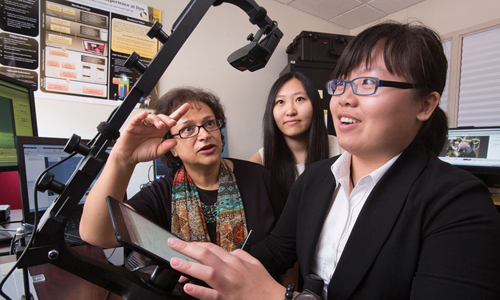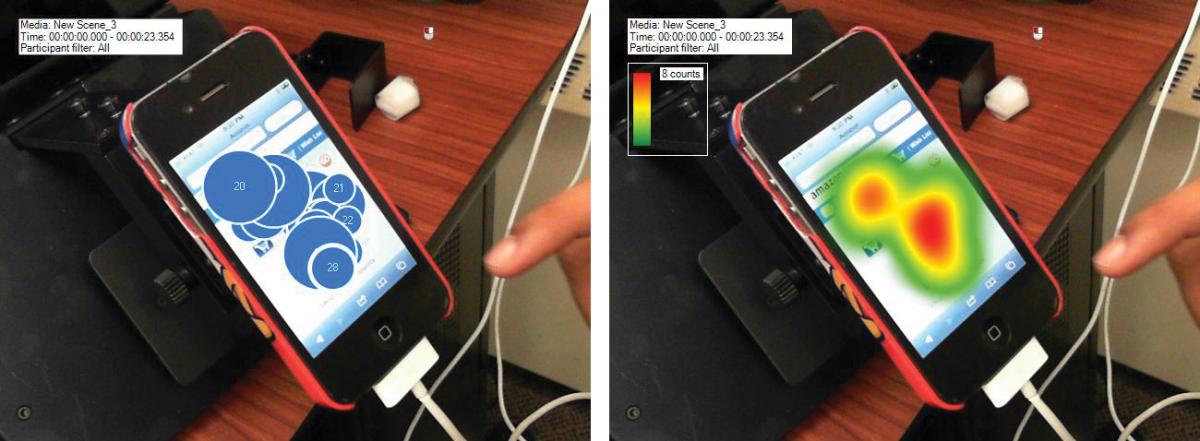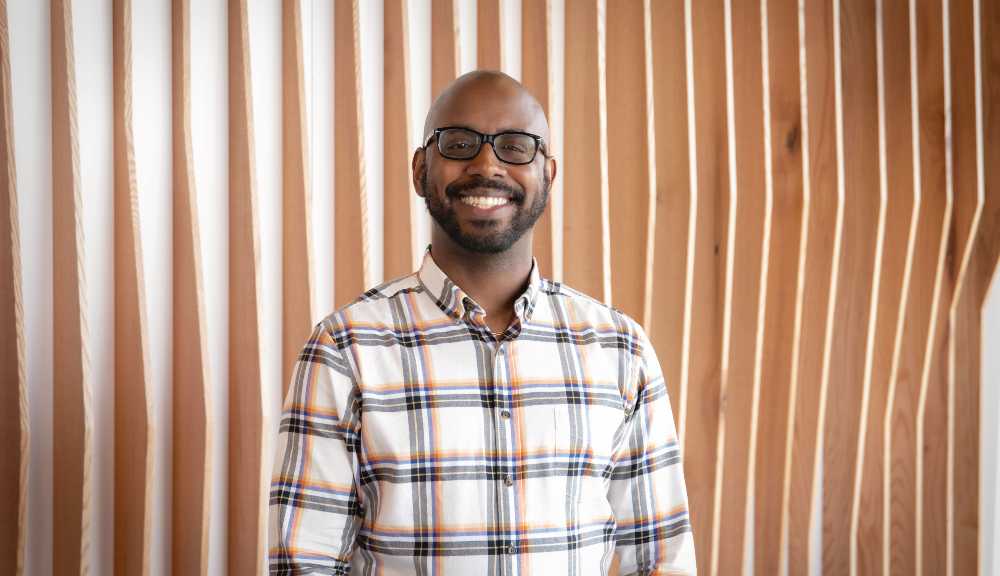“A first impression makes a huge impact on rational decisions,” says Soussan Djamasbi, PhD, associate professor of management information systems in WPI’s School of Business. “You can’t just design something that is easy to use. You have to know what the user wants and how to provide it.”
If you’ve ever found yourself getting lost on one website while you navigate another effortlessly, you’ve experienced the all-too- frequent disconnect between web design and user needs. Until recently, website creators have relied on good design principles and a bit of luck to create a satisfying customer experience. But that is beginning to change, thanks to the emerging field of user experience research.

From left, Soussan Djamasbi, associate professor of management
information systems, and Xue “Anny” Luan and Jingmin “Pat” Qiu, MS
candidates in marketing and technology innovation, use an
eye-tracking system. The system can be used to explore what users focus
on when looking at a web page.
WPI’s User Experience and Decision Making (UXDM) Research Laboratory, which Djamasbi founded and directs, is one of the leaders in this new discipline, which is built upon cutting-edge eye tracking technology. Djamasbi says user experience research can help companies be more successful, since more user-friendly websites and applications can lead to repeat customers and more business.
But the potential for the research goes far beyond those basic goals. The work Djamasbi directs is aimed, fundamentally, at expanding our understanding of how people take in and process information displayed on screens, how our emotional reaction to what we see affects our experience, and how interaction with and emotional reaction to screen displays influences the decisions we make. This knowledge could impact how websites, mobile applications, and other screen-based information sources are built.
With funding and partnership from Dynamic Network Services Inc. (Dyn), a leader in Internet infrastructure as a service technology founded by Jeremy Hitchcock ’04, Djamasbi has created a state-of- the-art laboratory with 15 eye-tracking stations—five for recording and 10 for analyzing data. In addition to using it for research, she will soon begin teaching a new user experience course in the lab. “I want to expose students to what research happens in industry and what is needed in industry,” she says.
The small camera-like eye tracking unit emits an infrared beam that, once calibrated to the reflection from a particular user’s pupil, will detect where that user is directing his gaze, moment by moment, as he navigates a website or uses a mobile app. The results appear as colored zones overlaid on the website or app screen. Red indicates areas that attracted the most eye time, while yellow and green define areas that were viewed less. The more intense the color (for example, the darker the red), the more intense the user’s gaze.
“It is a clear indication of the user’s attention,” Djamasbi says. “This literally allows us to peer through a user’s eyes and see what she is looking at.”




